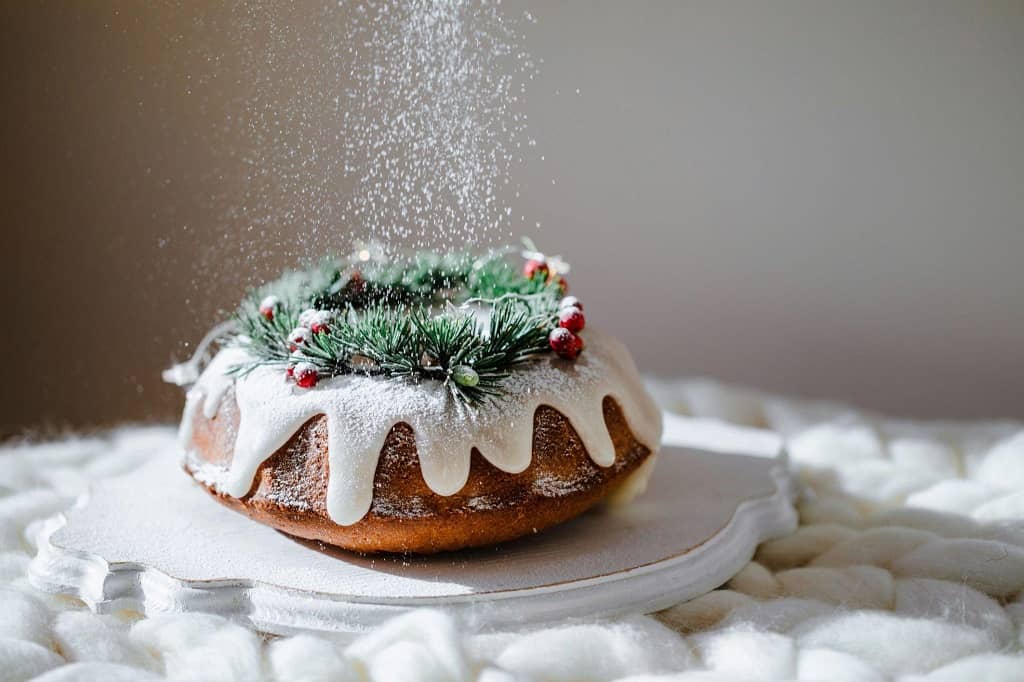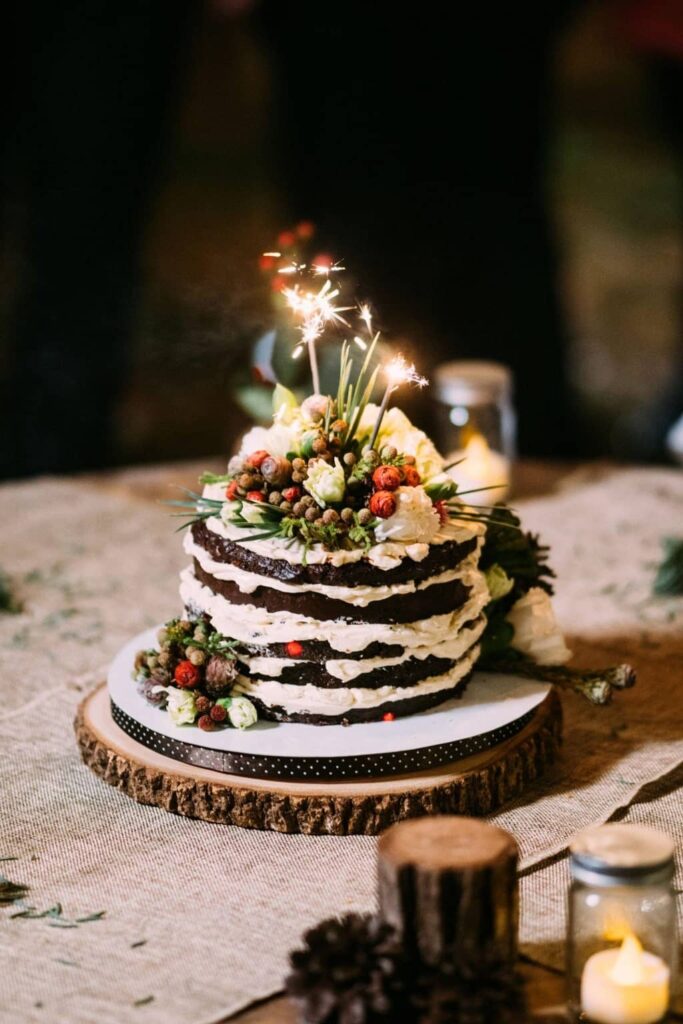Dessert decoration is a form of art that can elevate a simple treat to a beautiful work of art.
Whether you’re a home baker or a professional pastry chef, improving the appearance of your desserts can make them more alluring and memorable.
In this article, we’ll look at helpful hints and methods that will enable you to garnish desserts expertly.
Importance of Dessert Decoration

The way a dessert looks is often the first impression that entices people to try it. Beautifully decorated desserts not only catch the eye but also enhance the overall dining experience.
Decoration adds a touch of elegance, creativity, and personalization, making your desserts stand out from the crowd.
Essential Tools and Ingredients
Before diving into the art of dessert decoration, it’s important to have the right tools and ingredients at your disposal.
Some essential tools include piping bags, various tips, offset spatula, palette knife, decorating brushes, stencils, templates, and a turntable.
Additionally, having a variety of high-quality food coloring, edible glitters, and decorative elements like sprinkles, pearls, and edible flowers is crucial.
Choosing the Right Base
The base of your dessert sets the foundation for the decoration. Whether it’s a cake, cupcake, cookie, or tart, choosing the right base is essential.
Ensure that your base is well-baked, leveled, and properly cooled before beginning the decoration process.
A smooth and even surface provides a better canvas for your artistic skills.
Color and Texture Coordination

Creating visually appealing desserts involves careful consideration of color and texture coordination.
Select a color scheme that complements the flavors and theme of your dessert. Use different shades of the same color or complementary colors to add depth and visual interest.
Additionally, incorporating different textures, such as smooth buttercream, crunchy nuts, or velvety chocolate ganache, can elevate the overall appeal of your dessert.
Working with Piping Bags
Piping bags are indispensable tools for creating intricate designs on desserts. To work with a piping bag, ensure the icing or cream has the right consistency.
Fill the bag with the desired filling, hold it firmly, and apply even pressure to create consistent lines or shapes.
Practice different pressure techniques to master the art of piping.
Mastering Different Piping Techniques
There are various piping techniques that can take your dessert decoration to the next level.
Some popular techniques include creating rosettes, shells, dots, ruffles, and lace patterns.
Each technique requires different tips and pressure techniques. Experiment with different patterns and find the ones that best suit your dessert.
Using Stencils and Templates
Stencils and templates are excellent tools for creating precise and intricate designs. They can be used with powdered sugar, cocoa powder, or food coloring to create beautiful patterns on cakes, cookies, and other desserts.
Simply place the stencil on top of your dessert and dust or paint the desired design.
The result is a professional-looking decoration that adds elegance and sophistication to your creations.
Creative Use of Garnishes
Garnishes play a significant role in dessert decoration, adding flavor, texture, and visual appeal.
Fresh fruits, chocolate curls, chopped nuts, and shredded coconut are just a few examples of versatile garnishes that can enhance the overall look and taste of your desserts.
Experiment with different combinations and placements to create stunning presentations that make your desserts irresistible.
Incorporating Edible Flowers
Edible flowers are a unique and enchanting way to decorate desserts. They add a delicate touch of beauty and bring a fresh, floral aroma to your creations.
From pansies to violets to nasturtiums, there is a wide variety of edible flowers available.
Ensure that the flowers you use are pesticide-free and safe for consumption. Gently place them on top of your desserts or freeze them in ice cubes for an exquisite touch.
Creating Stunning Chocolate Decorations
Chocolate decorations are not only delicious but also visually captivating. You can make chocolate curls, shards, or even intricate shapes like flowers and leaves.
Melt high-quality chocolate, spread it thinly on a parchment paper, and let it cool. Once it hardens, carefully peel off the chocolate and use it to adorn your desserts.
The glossy and decadent appearance of chocolate decorations adds a professional touch to your creations.
Balancing Flavors and Presentation
When decorating desserts, it’s important to consider the balance between flavors and presentation.
The decoration should not overpower the taste of the dessert but should complement and enhance it.
For example, if you’re decorating a rich chocolate cake, opt for lighter and subtler decorations to maintain the focus on the chocolate flavor.
A harmonious balance between taste and aesthetics ensures a delightful dessert experience.
Attention to Detail
Attention to detail is what sets apart a novice decorator from a pro. Pay close attention to every element of your decoration, ensuring clean lines, precise placements, and neat finishes.
Smooth out any imperfections, fix uneven edges, and refine your design until you’re satisfied with the final result.
Small details can make a big difference in the overall impact of your dessert.
Practicing and Experimenting
Like any other skill, dessert decoration requires practice and experimentation. Don’t be discouraged if your first attempts don’t turn out perfectly.
Keep practicing different techniques, trying new designs, and learning from your mistakes.
With time and persistence, you’ll develop your own unique style and become more confident in your decorating abilities.
Troubleshooting Common Decoration Issues
While decorating desserts, you may encounter certain challenges. It’s important to be prepared and know how to troubleshoot common decoration issues.
Some common problems include icing consistency issues, smudging or bleeding colors, and decorations that don’t adhere properly.
Research and learn techniques to overcome these challenges, ensuring that your decorations always turn out flawless.
Conclusion
Decorating desserts like a pro is a skill that can be honed with practice, creativity, and attention to detail.
By following the tips and techniques outlined in this article, you can elevate your dessert decorations to new heights.
Remember to choose the right tools and ingredients, coordinate colors and textures, experiment with various techniques, and always strive for a harmonious balance between flavor and presentation.
Creating visually stunning desserts not only enhances their appeal but also adds a touch of artistry and personalization.
So, don’t be afraid to unleash your creativity and let your desserts become a canvas for your imagination.
Remember, practice makes perfect. Don’t get discouraged if your first attempts don’t turn out as expected.
Keep experimenting, learning from your mistakes, and refining your skills. With time and dedication, you’ll become a proficient dessert decorator.
Now, let’s address some frequently asked questions to provide further insights into the world of dessert decoration.
FAQs
Can I use regular food coloring for decorating desserts?
Yes, you can use regular food coloring for basic decoration. However, for more vibrant and professional-looking results, it’s recommended to use gel-based or concentrated food coloring.
These provide more intense colors without altering the consistency of your icing or other decorations.
How do I prevent my decorations from melting in warm weather?
In hot weather, it’s important to consider the stability of your decorations. Avoid using heat-sensitive items like whipped cream or delicate chocolate work.
Instead, opt for more stable options like royal icing, fondant, or chocolate that is less prone to melting.
Are there any alternatives to piping bags for decoration?
Yes, if you don’t have a piping bag, you can use a resealable plastic bag with a small corner snipped off.
It works similarly to a piping bag and allows you to create beautiful designs. However, for more intricate work, investing in a proper piping bag with different tips is recommended.

